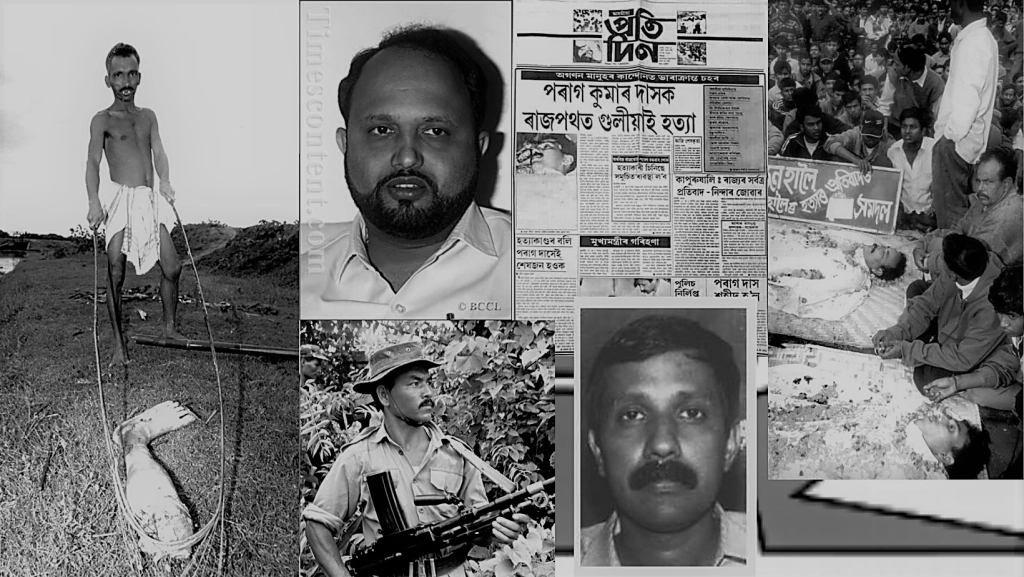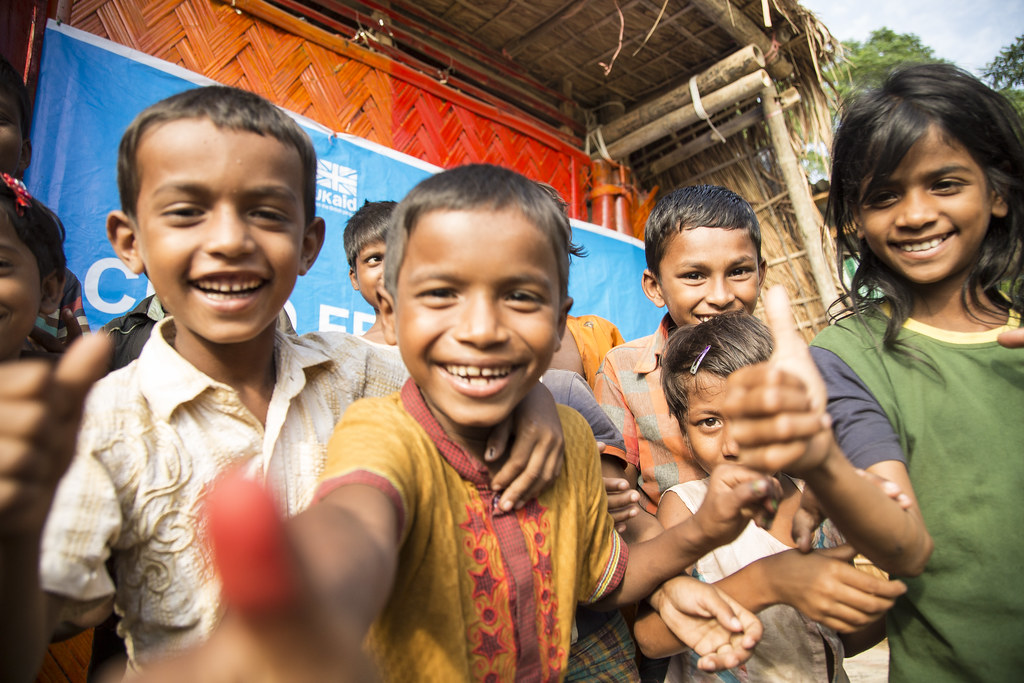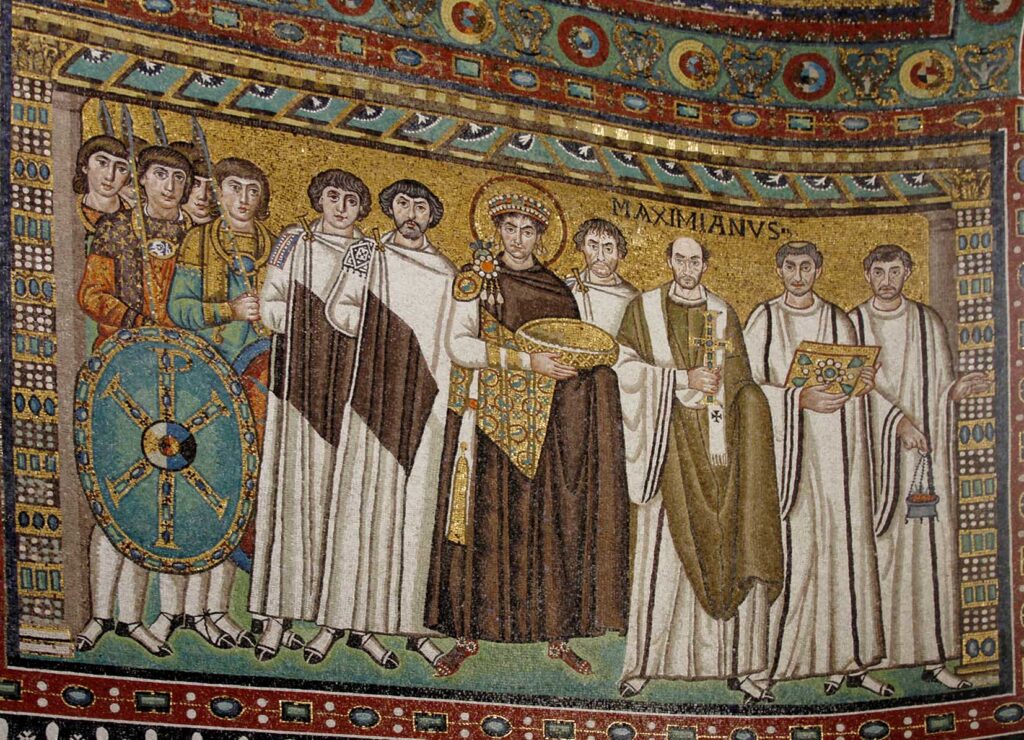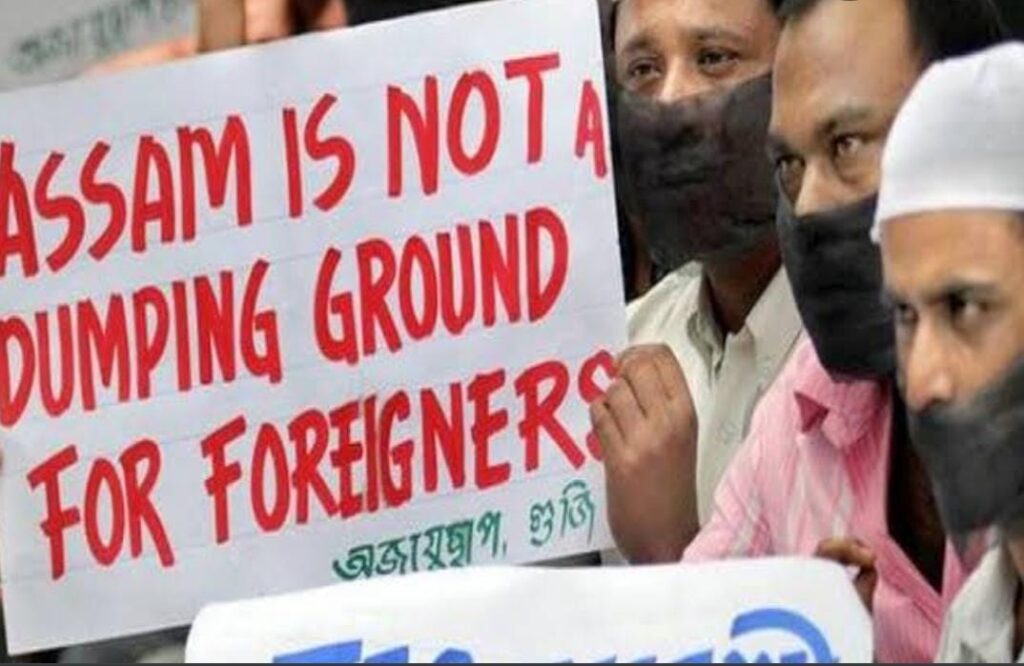When we were young we used to get scared of the word pulis (Police). No, we were not any gangsters or local trouble making goons. We were scared because we were very simple folks without any connection with either ‘bad people’ or ‘good people’. It was the year 2001 and I was a six-year-old who went to Nalbari for Raax Mahotsav1. Half of our relatives stayed there and a few of us visited Hari Mandir for Raax. On our way back home late in the evening, we met a platoon of armed men in uniform a few hundred metres from home. There were five to six state policemen, the rest were Hindi speaking people. It generally made us all uncomfortable. The policemen asked the two uncles some questions and the rest gave us some very strange, heart chilling stares. I could not comprehend the situation back then; who they were, why we were stopped and what was asked. But the fear of pulis was strengthened in my mind.
In the late 90s, Assam was infamous for secret killings. We heard stories of young men being dragged out of homes by men in camo and khaki clothes, only to be killed. Some bodies were found and the rest vanished into thin air. Secret Killings of Assam By Mrinal Talukdar, Utpal Borpujari and Kaushik Deka depicts some stories of those killings. Justice K. N. Saikia Commission reported these killings in detail. But long before I found the book, before I got to know anything about any such commissions, I came across a story that took place just about 25 kilometres from our home in Nalbari. One of my mother’s schoolmates from Piplibari was taken by some people at night. Later the man was found in the middle of a rice field, buried to the neck, dead. He was dug out by the policemen from the local police outpost. He had multiple stab markings all over his body and his nails were plucked out with his right thumb missing. Evidently, the man was tortured to death. It was said he had some linkages with some SULFA cadres2 and therefore the serving cadres of ULFA did the job. That, however, remained a rumour and no one pursued the case any further – perhaps due to lack of evidence or for fear of repercussions from either side. The family was ostracized.
The rise in turmoils during the 90s
The United Liberation Front of Assam (ULFA) came into existence in April 1979. According to some thinkers, it was in the wake of the Assam movement that ULFA was formed by some who had more radical thoughts and saw separatism as the only solution for the bias faced by the Assamese community. The bias still exists and it has been existing perhaps since 1826. In Strangers of the mist, Sanjoy Hazarika writes, “He (Gopinath Bordoloi) was aware of the ignorance of other Indian leaders (during the Indian freedom struggle) about his people and the Northeast region. He often despaired of even improving their level of knowledge.” However, Gopinath Bordoloi was a politician and with his political acumen worked to secure a better future for the entire Northeastern region.
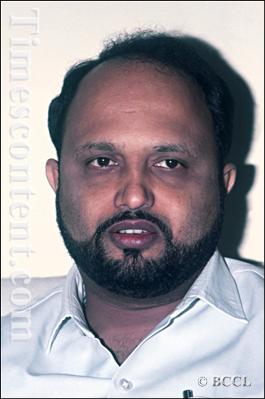
The Assam Movement brought down the Hiteshwar Saikia led Congress Government and Prafulla Kumar Mahanta, erstwhile President of the All Assam Students’ Union (AASU) became the youngest chief minister of the state. The government was however burdened by the power conflicts between Mahanta and his Home Minister, erstwhile General Secretary of AASU, Bhrigu Phukan, whom Mahanta considered a ULFA sympathizer. President’s rule followed the Mahanta regime and Hiteshwar Saikia regained power in June 1991. All these, while insurgency in Assam reached significant heights. Several insurgent and separatist groups sprung out of remote pockets of Assam. Out of them, the National Liberation Front of Assam posed some serious threats to the peace of the western part of the valley. But both the central government and the Congress government in the state were after ULFA who was considered the root of all troubles caused in Assam. On 15 September 1991, operation Rhino was launched. The news was that the GOC of the 4th Corps, Lt. Gen. Ajai Singh met Saikia and told him that he would finish the operation by 31 December. And the army did their job. The first deputy Commander-in-chief of ULFA Heerak Jyoti Mahanta alias Jayanta Medhi alias Naren Deka was arrested from Geetanagar by police with the help of the army on 31 December 1991. However, he was later killed in the Chandrapur hill area when he allegedly tried to flee while going to show the state forces a depot of weapons. It was contested that Mahanta was the main barrier for some ULFA cadres willing to surrender and lay weapons down in front of the Government.
The Government of Assam gave Rs 2,00,000 (of which 1,00,000 was a bank loan for which the state government stood as guarantor) to each individual who surrendered. In the case of partnerships with the government, the ceiling was increased to Rs 10,00,000 of which Rs 2,50,000 constituted margin money3 and the rest bank loan. In the case of cooperative societies formed by the “misguided youths”, the ceiling was Rs 20,00,000 of which Rs 5,00,000 was margin money. They were given a 3 year moratorium period after which the repayment shall start. According to former Governor of Assam Lt. Gen. (Retd) S. K. Sinha, the SULFA cadres were allowed to retain a weapon and they never returned the money4. Hiteshwar Saikia’s regime was followed by Prafulla Kumar Mahanta’s AGP. The second term of the AGP government cast a dark shadow on the lives of the Assamese people. What ensued, directly or indirectly affected every Assamese and took down Mahanta’s political career for good.
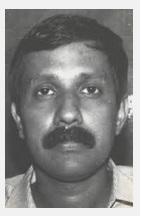
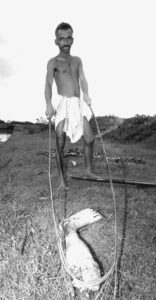
People started disappearing without any explanation. Especially the ones who had or were suspected to have some kind of relations with ULFA cadres or were sympathizers. Rumours spread that uniformed men came in Gypsies and picked people from their homes. They were never seen again; at least not alive. People started accusing Chief Minister Mahanta and suspected he had something to do with the disappearances. Parag Kumar Das, a human rights activist and a ULFA sympathizer was murdered in broad daylight in the Chandmari area of Guwahati but the smoke that was already rising caught fire when Rajib Bora, then working at the Guwahati Desk of the Telegraph used the words ‘Secret Killings’ on 24 June 1999 while reporting the finding of a severed leg near an embankment of Hudumpara, Palashbari, some 30 kilometres south of Guwahati. Two days later a severed head was recovered which was later identified as a ULFA sympathizer of Sualkuchi-Hajo area5.

Two decades of the century that followed
The hatred and disgust for the Prafulla Kumar Mahanta government cleared the path for the Congress party to come to power again. But this time Tarun Gogoi was at the helm. A veteran politician, he leveraged the grim situation of Assam for his gain. People needed change and they got it. Meanwhile, two Bodo insurgent groups gained power and clout in the state; the Bodo Liberation Tigers Force, popularly known as the BLT and the National Democratic Front of Bodoland (NDFB). With all these insurgent groups and counter police actions, the state walked a very slow stride towards progress. Ordinary people always remained frightened. There were SULFA people who always carried weapons and travelled in cars with heavily tinted glass. There were policemen who resorted to atrocious behaviour with the slightest provocation. And then there were the common people who had nothing to do with the constant wars and proxy wars waged by the government and the anti-government entities. With the Armed Forces Special Powers Act (AFSPA) in force since 1990, people feared going to markets. Evenings were gloomy and cold. People never came out of houses on 15 August and 26 January fearing ULFA’s disruptive activities.
It was Independence Day of 2004. ULFA had called for a boycott of Independence Day celebrations throughout the state. However, in Dhemaji, some school children along with their parents, mostly mothers, came to Dhemaji College Ground to hoist the flag. At around 9:30 AM, a remotely controlled bomb went off near the college gate killing 18 people, mostly children between 12-14 years of age and their mothers. 40 people were injured in the incident. Police blamed ULFA for the bombing, however, the outfit denied any responsibility. Soon after the incident, the locals started attacking the police for failure to secure the ground when the threat was imminent. Police resorted to lathi-charge and fired tear gas to bring the situation under control. CM Gogoi announced that AFSPA in the state will continue to keep the insurgent groups in check.
The times before that only saw ULFA cadres murdering SULFA and vice versa. The bomb blast shook the whole state. Although the involvement of ULFA was doubtful, the outfit started losing sympathizers. Before that, it was a common concept that ULFA would not hurt any Assamese. Even that statement too became doubtful. There were incidents when ULFA cadres demanded money from Assamese businessmen in Upper Assam. Tea companies were a common target. Meanwhile, a group of goons too started extorting money from people in the name of ULFA. Thus those groups and their members were called pseudo-ULFA and they were hunted by both ULFA and SULFA. While all these skirmishes and battles were going on, the NDFB rose to power. Another faction came into existence in 2004 – the Karbi Longri North Cachar Hills Liberation Front. They were aided by the ULFA and allegedly trained too. The Tarun Gogoi government who used the ULFA menace and the secret killings as a stepping stone to power was far from any kind of solution to the insurgency.
In 2008, four years after the Dhemaji bombings, another deadly attack shook the state to its roots. Reports indicate that as many as 18 bombs went off just before noon on 30 October in Guwahati, Barpeta Road, Bongaigaon and Kokrajhar. It was just after the Diwali holidays and the city was busy with people back for business, to go to offices, etc. The Guwahati bombs were planted on a scooter in Panbazar near the DC office, in Fancybazar and another in a car in Ganeshguri. All these places become very crowded in the morning. Fancy Bazar is a marketing hub, Panbazar near the DC office has the Bar Association building, the CJM Court and Cotton College (a few hundred metres away). Three blasts ripped Kokrajhar and a grenade was thrown in Bongaigaon. Two grenades were thrown at Barpeta road. At least 81 people had died on that ill-fated day and 470 were injured. I was in school when the news reached the school television. Those days my father used to work at Christian Basti, a little away from the blast site. Our classes were cut short and students were sent home. The mobile network was disrupted and we had no connection with our father until he returned that evening and we regained our breath.
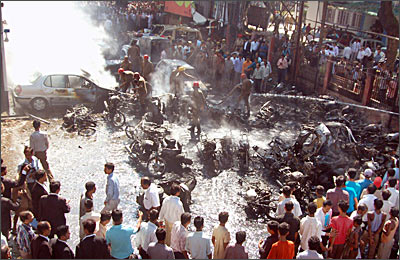
He narrated how he had to make his way amid burning cars and buses to reach a safe place at the Dispur Supermarket area and try to get a ride home. He broke down talking about the half-burnt twisted body of a bus driver attached to the steering wheel. He walked beside some lumps of human flesh on a footpath. In Panbazar, the whole bike stand was burnt to ashes. The outfit responsible for these inhuman activities were none other than the NDFB. RDX and plastic explosives were used to carry out the blasts. The bombs were such that fire erupted immediately following the blasts. It was speculated that timers were used to carry on the blasts as all of them went off within a short span of 15 minutes. Politically a lot happened, but the people of Assam saw that dark days are not over. The Assamese people were still losing their close ones to the wars of few.

Another personal experience of mine of the growing Bodo power was when I visited Dimakuchi in December 2007. Just a few months before that there were severe clashes between the Bodo people and the Bangladeshi Muslim community that had made small villages near the Suklai river. The communal clashes propagated and reached near Tangla area towards the east and Tamulpur towards the west and spread to other Bodo majority areas where the Bangladeshi Muslim people were residing. However, those communal violences saw extensive vandalism and loss of property than any actual killings. But it was quite clear that the Bodo community too saw extremist elements growing among them.
1 January 2009. It was just two months from the 30 October bombings. People were still grieving. This time the ULFA pulled off another series of bombings in some places of Guwahati. That was in response to the then Union Home Minister P. Chidambaram travelling to the city. Police confirmed that the blasts were low intensity, carried out using IED. Although 5 people including a 10-year-old child were injured in the 2:35 PM blasts near Lokopriyo Gopinath Bordoloi TB Hospital, Birubari, 2 were killed and at least 25 were injured in the blasts at the Bhootnath market near Kamakhya Gate, at least 34 were injured and 3 of them succumbed to their injuries soon after while 1 died later in hospital in the Bhangagarh blasts near Big Bazaar at 5:45 PM. The third blast was near a kerosene source and thus caught fire.
6 April 2009. ULFA went to another level of low when a series of bombs went off on the eve of the PM’s visit to address poll rallies for the campaigning phase of the 2009 General Elections. At around 2:00 PM the first bomb went off in the Maligaon area of Guwahati. The blast sparked a fire that burnt two cars and about 20 motorcycles and spread to a three-storeyed building nearby. 7 people were killed, 6 instantly at the blast site and 1 succumbed to injuries he received after jumping out of a window of the burning building, and about 56 were injured in the first blast. A second bomb went off in Dhekiajuli hours later. It was planted on a bicycle. 5 people were injured in the blast. This time the Assam CM agreed to the lapse of security allegations and stated this could have been avoided.
That year another violent misdeed was committed by the NDFB. It was like a maleficent showdown of power between the ULFA and the NDFB, two of the biggest and most dangerous insurgent groups of the time. The anti-talks faction of the NDFB led by Ranjan Daimary opened fire indiscriminately at the villagers of Bhimajuli, a village in the Sonitpur district on 4 October 2009. Allegedly someone from the village tipped off about some NDFB activities going on in the region. In retaliation, the group opened AK-47 rifles towards the villages. 12 (15 according to some reports) people died including an eight-year-old girl who succumbed to her injuries in GMCH, Guwahati. In repercussion, the irate villagers of Bhimajuli and some other nearby villagers made an abortive attempt to storm the Balichong Police Outpost. CRPF and AP Battalions managed to stop that, however, hundreds went and burned thatched huts of a Bodo village, some 5 kilometres north of Bhimajuli.
Towards the end of the first decade, ULFA started losing the support of the people they had during the 90s. People wanted peace, an end to this war that seemed unending. Towards the end of 2009, some senior leaders of the outfit were arrested from Dhaka, Bangladesh. The facts of their arrests were however disputed as both the government and the pro-talk leaders abstained from disclosing any details. The entire act implied some kind of political motive of many and clearly showed the waning power of the outfit. C-in-C Paresh Baruah however, maintained a clear anti-talk stand and declared he shall be continuing his war against the state. The people, overlooking all the political bits, thought that at least there shall be an end to all these bombings and killings. And slowly there was.
Dima Halam Daogah, the outfit that wanted to set up a separate land for the Dimasa people laid down their arms in a series of surrenders from 2009 to 2013. When that happened the CRPF and local police while accepting their surrender recovered some expensive and modern weapons that are used by some of the advanced armies. AK-47s, SLR rifles, RPGs, Brit Carbines were among them.

The Karbi Longri North Cachar Hills Liberation Front which formed as a result of a split in the United People’s Democratic Solidarity due to the signing of a ceasefire agreement with the government was disbanded and all of its members laid down arms in front of the government as of 2021. The NDFB, after suffering major reverses from the Royal Bhutan Army in Operation All Clear, signed a ceasefire with the Indian authorities in 2005. This split the NDFB up into NDFB(P), the pro-talks faction and NDFB(Nabla) faction, led by Ranjan Daimary aka D.R. Nabla, who opposed talks.

In 2012 when Nabla was arrested, the Nabla faction split further and the NDFB(Songbijit) faction indulged in violence. However, in 2015 the general assembly of NDFB dissolved the Songbijit faction. Later in 2020 the NDFB surrendered and disbanded itself. Although ULFA was considered the Godfather of all organized insurgencies in the state, it was believed that the NDFB killed most civilians and security personnel and hence garnered hate from all sections of the people, which was a little different in the case of ULFA. When the ULFA pro-talks leaders were produced in the court, people from the crowd shouted, “Surrender Nokoribo” (Do not surrender). This proved that there were still some ULFA sympathizers in Assam. However, with time, ULFA started losing its relevance. Now although Paresh Baruah leads the ULFA(I) faction and is still in a state of animosity with the state, people could not care any less for the outfit.
Towards the latter half of the second decade, the outfits and their cadres saw no point in continuing a war that had no end. For the love of their people’s lives which were lost as collateral damage in the wars waged by them or for the flattery of lucrative schemes for surrendered members by the government, insurgency decreased in the state. We can speculate a variety of aspects here. For once we cannot ignore the role of education in the decreasing level of insurgency in the state. With education, people started understanding that perhaps politics and not insurgency is the solution to achieve goals. The old majors gave in to the neo-socio-political outlook. Talks and inclination towards peace increased. Although the lucrative schemes are funded by taxpayers’ money, people were happy that at least now they could live in peace or at least, with an idea of it. As of 2021, no major insurgent groups exist and the minors too are moving towards peace talks. The current CM Himanta Biswa Sharma invited Paresh Baruah to the table for peace talks to which the senior rebel has shown interest.
We are a generation whose childhood and teenage years passed while the state was going through the insurgent menace. The region has been a troubled one for a very long time and was in fact a “disturbed area.” But now the situation is improving. The recent operational mishandling in Nagaland and the killing of 14 civilians by para special forces due to an intel error brings the issue of AFSPA imposition to the table for debate. While both the central and state (Assam) government boasts that the Northeastern region is moving faster towards progress it fails to acknowledge the move towards peace by keeping AFSPA still in force. The Nagaland violence has forced the Union Home Ministry to constitute a committee to deliberate the necessity of AFSPA in Nagaland. Now the question is until when AFSPA shall be in force in Assam? Why Assam is still considered a disturbed area when there is no visible insurgency and the same fact is corroborated by the state government. These are some political questions that need answering. But the most important fact for any Assamese is that, while we enter the third decade of the 21st century, we can see insurgency going down. In time the repeal of AFSPA shall be worth looking for.
- Raax Mahotsav is Raaslila. But unlike Majuli or any other part of India, Raax in nalbari is not a theatrical enactment of the life of Lord Krishna, rather an elaborate exhibition and storytelling using statues, some with even animatronics. Every year an ocean of people from all over Assam pour into nalbari for Raax Mahotsav.[↩]
- SULFA cadres are the Surrendered cadres of the United Liberation Front of Assam.[↩]
- Margin money is the fixed amount of the total amount that belonged to the individual[↩]
- Sahni, Ajai, and Bibhu Prasad Routray. ‘SULFA Terror By Another Name’. South Asia Terrorism Portal, 2001, www.satp.org/satporgtp/publication/faultlines/volume9/Article1.htm.[↩]
- Talukdar, Mrinal, et al. ‘That Photograph’. Secret Killings of Assam, 2nd ed., Bhabani Books, 2011, pp. 16–28.[↩]

